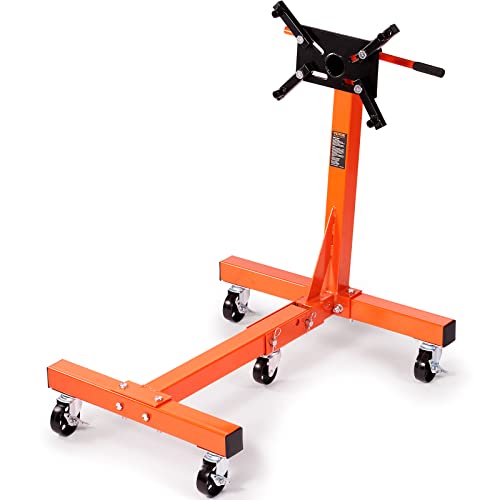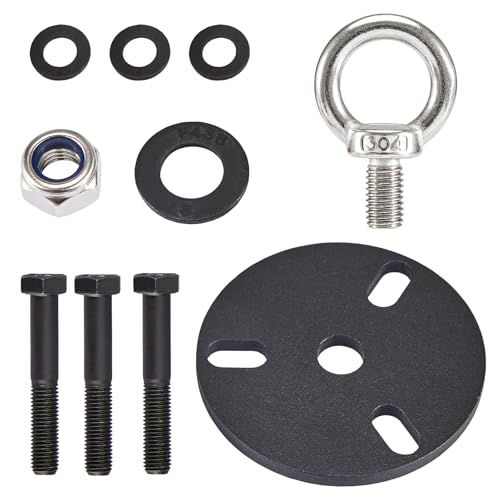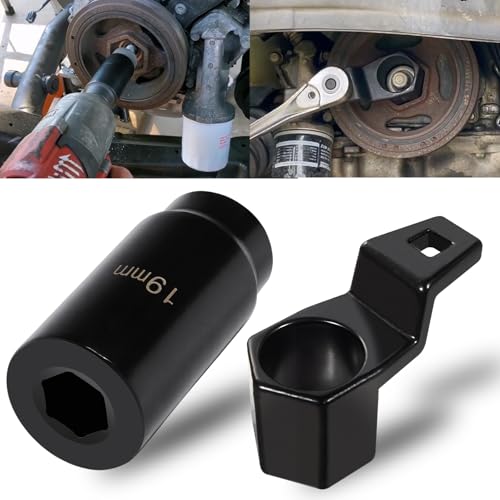The electric cello mixes old-world string playing with new tech. It lets classical musicians play with a wider range of sounds. This instrument is perfect for those who want to keep the traditional feel but also explore new sounds.
It’s becoming a favorite among artists. This piece will look at the electric cello’s history, its perks, what makes it special, and how to play it. Knowing these things can help musicians express themselves better and reach out to new audiences.
Table of Contents
Understanding the Electric Cello
The electric cello has changed how musicians perform and explore sound. It uses pickups to turn string vibrations into electrical signals for amplification. This tech lets artists make unique sounds, blending classical and modern music.
Electric cellos are used in many musical settings, from jazz to modern orchestras. They are smaller and more durable, making them easy to carry. This makes them a good choice for beginners who travel a lot.
Even though electric cellos don’t have the same resonance as acoustic ones, technology is improving sound quality. Models like the Yamaha SVC-210 Silent electric cello show big advancements. They offer great sound and are easy to carry.
Electric cellos come at different prices, but they are often more affordable for students. The Cecilio 4/4 CECO-4BK is a good example, offering great sound for just $544. For those looking for a premium experience, the NS Design WAV4 electric cello is available for between $1,385 to $1,499. It’s known for its exceptional craftsmanship and playability.
| Model | Price ($) | Features |
|---|---|---|
| Cecilio 4/4 CECO-4BK | 544 | Great sound quality, budget-friendly |
| Stagg ECL 4/4 BK | 783 | Good quality for beginners |
| Yamaha SVC-210 Silent Cello | 3000+ | Superior sound, ideal for professionals |
| NS Design WAV4 Electric Cello | 1385-1499 | Professional quality, well-balanced |
| Bridge Dragon 4 Electric Cello | 4172 | Unique design, high-end features |
The electric cello is a great choice for musicians looking to explore new sounds. As these instruments evolve, the possibilities for soundscapes grow. Trying out different models helps cellists find the right one for their musical journey.
History of the Electric Cello
The electric cello’s story started in the 1930s. It marked a key moment in its history. As electronics improved, people wanted louder instruments for bands and orchestras.
Early electric cellos were great for traveling and sounded good with amplifiers. They fit well into the changing music world.
String instruments have changed a lot, and the electric cello is a big part of that. It’s thinner and easier to carry than traditional cellos. This makes it perfect for musicians who travel a lot.
Electric cellos are also cheaper than classical cellos. Prices for classical cellos can be from $2,000 to $10,000. But electric cellos are more affordable for beginners and fans.
“The electric cello has not achieved the widespread success of instruments like the electric guitar or electric violin, yet its popularity continues to grow in various genres.”
Today, electric cellos have gotten better thanks to new technology. Many have piezo pickups that let you change the sound. You can even add effects like distortion and chorus.
But electric cellos still have some issues. They don’t sound as good as acoustic cellos. They’re not used much in orchestras. But, they’re becoming more popular in modern music and schools.
| Feature | Electric Cello | Classical Cello |
|---|---|---|
| Price Range | Less expensive | $2,000 – $10,000 |
| Portability | Thinner, travel-friendly | Heavier, bulkier |
| Sound Production | Requires amplifiers | Acoustic resonance |
| Tone Quality | Varies, effects available | Rich and traditional |
| Silence Practice | Yes, with headphones | No |
The electric cello is still evolving. It’s used in both professional settings and schools. This shows how electric instruments are changing music, appealing to many musicians.
Benefits of Using an Electric Cello
The electric cello offers many benefits for musicians. It makes practicing and performing better. This new instrument lets players try out different sounds and effects, fitting their style.
Unlike traditional cellos, electric ones use modern tech. This opens up new creative paths for musicians.
Versatility in Sound
Electric cellos are very adaptable. Musicians can change their sound with various effects and amps. This makes them great for many music styles, from classical to modern.
Models like the Cecilio Electric Cello have tone knobs. These knobs let musicians quickly change the sound. This gives them a wide range of expressive possibilities.
Quiet Practice Options
Practicing quietly is important for many musicians. Electric cellos often have headphone jacks. This is perfect for quiet practice.
With headphones, musicians can play without disturbing others. This helps them focus on details like vibrato and bowing techniques.
Different Models of Electric Cellos
Electric cellos have become popular, offering many choices for musicians. Each model suits different tastes and skill levels. It’s important to know what’s available when picking an electric cello.
Many electric cellos use advanced pickups to improve sound quality. They often have piezo pickups in the bridge. This setup can have one to eight elements, capturing every detail of the music.
The shapes of electric cellos vary a lot. Some look like traditional cellos, while others are more modern. Lighter models, under 6 lbs, are great for those who want comfort and good sound.
- Jordan Ariel Model – Introduced in 2003, this model combines classic tone with contemporary design.
- Mermaid Cello – Inspired by a mythical concept and created in 2017, this cello offers unique visual and auditory features.
- Jordan Virage Model – Developed in the 1990s, it maintains classic cello geometry while integrating modern technology.
- 7/8 Size Electric Cello – Designed in 2021 for a specific musician, this model demonstrates attention to tailored performance.
- Lightweight Model – A 2022 creation that focuses on ease of handling, perfect for performing musicians on the go.
When picking an electric cello, think about sound quality, price, and body type. Each model has its own special features. This means there’s an electric cello for everyone, from beginners to experts.
Top Electric Cello Brands
Choosing an electric cello means looking at several top brands. Each brand has unique features and designs for different musicians. Here’s a look at some leading brands and their standout models.
Yamaha
The Yamaha electric cello series is known for quality and innovation. Models like the SVC-210 and SVC-110 are praised for their sound. They mix traditional craftsmanship with modern tech.
The SVC-210 has a hollow chamber for better sound. The SVC-110 has a sleek design with a maple neck and ebony fingerboard.
NS Design
NS Design cello models are all about innovation and versatility. The WAV4 electric cello is a solid-body instrument for under $1,000. It’s perfect for those wanting great sound without spending a lot.
The CR5 has a 5-string setup and is lightweight. It suits many musical styles.
Cecilio
Cecilio electric cellos are great for beginners and are affordable. The CECO-4BK has a maple body and a high-gloss black finish, priced around $544. Cecilio offers quality at a low price, making electric cellos more accessible.
Knowing what these brands offer helps musicians choose the right cello. It enhances their musical journey.
Electric Cello Features
Understanding the essential electric cello features gives insight into their unique qualities. These features include body construction, pickup systems, and compatibility with other audio equipment.
Body Construction
The body of an electric cello greatly affects its sound and playability. It’s often made from solid straight grain maple, which enhances sound resonance. Electric cellos have dimensions that keep traditional playability while adding modern touches.
For example, a typical electric cello is 94.2 cm (37″) long, 13.9 cm (5.5″) wide, and 9.4 cm (3.7″) thick. It weighs about 1.9 kg (4.1 lbs.) for four-string models. This makes it easy to use for long performances. Finishes like Satin Black or Sunburst add beauty, matching musicians’ tastes.
Pickup Systems
The choice of pickup systems greatly affects the electric cello’s tone and sound capture. Many use the Polar bridge-mounted piezo pickup system. This system captures string vibrations well, allowing for various playing techniques.
Electric cellos offer different string setups, like standard C G D A tuning for four-string models. Five-string models use Low F C G D A tuning. The bridge’s design and the number of piezo elements add to the instrument’s versatility.
Amp and Effects Compatibility
Working with a cello amplifier and using effects can enhance the playing experience. Electric cellos have electronic controls for volume and tone, letting musicians adjust their sound. They also have options for Arco and Pizzicato modes for more sound customization.
Using effects like distortion, wah, and chorus opens up more sonic possibilities. Accessories like the NXT Cello tripod stand and a choice between a gig bag or hardshell flight case make playing and transporting the cello easier.
| Feature | Description |
|---|---|
| Body Material | Solid straight grain maple |
| Body Dimensions | Length: 94.2 cm (37″), Width: 13.9 cm (5.5″), Thickness: 9.4 cm (3.7″) |
| Weight | 4-string: 1.9 kg (4.1 lbs.), 5-string: 1.9 kg (4.2 lbs.) |
| Scale Length | 69.5 cm (27.36″) |
| Pick-Up System | Polar bridge-mounted piezo pickup |
| Tuning Options | 4-string: C G D A, 5-string: Low F C G D A |
| Control Options | Rotary volume control, tone control, Arco/Pizzicato switch |
Electric Cello Techniques
Learning electric cello techniques is a mix of old and new. Players use special bow methods and sound effects to make the music pop. This way, they connect with today’s music lovers in a big way.
Bow Techniques
Electric cello bow techniques blend old and new. Musicians use:
- Legato: Smooth notes for flowing music.
- Staccato: Short notes for clear rhythm.
- Col legno: Wooden bow hits for cool sounds.
- Frog strokes: Unique sounds from the bow’s frog.
- Dynamics: Changing bow pressure for different sounds, great with amps.
Using Effects for Enhanced Sound
Effects change how electric cello music sounds. Musicians use different effects to create new tones. Some popular ones are:
| Effect Type | Purpose | Impact on Sound |
|---|---|---|
| Distortion | Adds grit and intensity. | Creates a raw, edgy sound perfect for rock or experimental music. |
| Reverb | Simulates acoustics of different spaces. | Brings depth and atmosphere to the sound. |
| Delay | Repeats notes at timed intervals. | Boosts musical phrases and can make complex sounds. |
Using these techniques, musicians unlock the electric cello’s full potential. It becomes a key part of today’s music.
How to Choose the Right Electric Cello
Choosing the right electric cello means knowing what you need, your musical goals, and your budget. This guide will help you make a smart electric cello selection.
First, think about the number of strings. Most people choose 5-string electric cellos, which offer more sound options. The decision between 4-string and 5-string models affects how you play.
Don’t forget about the cost. Good amplifiers can make a big difference in sound quality. For about $200, you can find quality amplifiers from brands like Peavey, Fender, or Yorkville. Remember, electric cellos vary in price based on features and brand.
Electronic parts are key to sound quality. Good pickups and pre-amplifiers are crucial, especially for live performances. Also, having the right accessories, like headphones and speakers, can improve your playing experience.
Don’t ignore shipping costs and times. Shipping an electric cello within the U.S. costs around $125. It usually takes 3 to 5 days to ship in North America. Make sure all shipments are insured for safety.
| Factor | Details |
|---|---|
| String Configuration | 4 or 5 strings, with 5-string models being more common. |
| Amplifier Cost | Approximately $200 for reliable options. |
| Shipping Cost (U.S.) | About $125 USD. |
| Shipping Time (North America) | 3-5 days. |
| Insurance | Included on all shipments. |
| Accessories | Headphones, portable amplifier, tuner, speakers. |
| Playability | Portability and reduced tuning needs compared to acoustic cellos. |
With these tips, you can confidently pick the right electric cello. Make sure it meets your needs and preferences.
Electric Cello in Contemporary Music
The electric cello has become key in modern music, blending classical with modern styles. Its unique sound opens up new musical paths. Famous electric cellists show how versatile it is in different genres.
Integration in Various Genres
The electric cello is now in rock, pop, jazz, and film scores. It can make both traditional and electronic sounds. This lets musicians create unique experiences for different audiences.
Artists like Tina Guo add depth and sophistication to their music. They make the electric cello a go-to for many composers and performers.
Popular Electric Cello Artists
- Tina Guo – Known for mixing classical and modern in film and popular music.
- Yo-Yo Ma – A traditional cellist exploring new genres and collaborating with artists.
- Serena Yang – Famous in pop and electronic music for her electric cello innovation.
- Mike Block – Combines traditional folk with modern sounds in his electric cello work.
- Tracy Silverman – A leader in electric cello, exploring avant-garde and improvisational music.
| Artist Name | Genre | Notable Work |
|---|---|---|
| Tina Guo | Film Music | Music for major video games and movies |
| Yo-Yo Ma | Cross-Genre Collaborations | Multiple classical and modern album collaborations |
| Serena Yang | Pop | Tracks featuring electric cello in popular music |
| Mike Block | Folk | Innovative arrangements blending electric and traditional sounds |
| Tracy Silverman | Avant-Garde | Performances focused on experimental and improvisational music |
The electric cello is changing modern music, giving musicians new ways to innovate. As more artists use it, it becomes a key part of many genres.
Best Electric Cello Models on the Market
The electric cello has become popular for its versatility and unique sound. This section looks at some top electric cello models. We’ll talk about their features, prices, and who they’re best for. Models include the Yamaha SVC-210, NS Design WAV4, and Cecilio CECO-4BK.
Yamaha SVC-210 Silent Electric Cello
The Yamaha SVC-210 Silent Electric Cello costs over $3,000. It’s a top pick for professionals. Its design focuses on comfort and reliability, making it great for different settings.
It’s known for being quiet, thanks to a built-in headphone jack. This makes it perfect for practicing without bothering others.
NS Design WAV4 Electric Cello
The NS Design WAV4 Electric Cello costs between $1,385 and $1,499. It’s a quality option that’s easy on the wallet. Made from solid maple, it offers a professional sound at a lower price.
It comes with accessories for customization. Its lightweight design makes it easy to play, making it a top choice for many.
Cecilio 4/4 CECO-4BK Electric Cello
The Cecilio CECO-4BK Electric Cello is a budget-friendly option at $544. It’s perfect for beginners. It offers good sound quality and a great price, making it easy for new musicians to start.
This model completes our review of the best electric cellos. It’s a solid choice for today’s musicians.
| Model | Price | Ideal For | Key Features |
|---|---|---|---|
| Yamaha SVC-210 | $3,000+ | Professionals | Headphone jack, silent operation, reliable and comfortable design |
| NS Design WAV4 | $1,385 – $1,499 | Intermediate to Professional | Solid maple construction, customizable accessories, lightweight |
| Cecilio CECO-4BK | $544 | Beginners | Budget-friendly, user-friendly features, good sound quality |
The Role of Technology in Electric Cellos
Technology makes electric cellos more exciting for musicians. It brings new ways to make and amplify sound. Key parts like cello amplifiers, pickups, and electronic effects add to the instrument’s flexibility and expression.
Cello Amplifiers
Cello amplifiers are key to making sure the electric cello’s sound is clear and strong. They help the instrument’s natural sound shine through. When picking an amplifier, look for:
- Output Power: This shows how loud the cello can get in different places.
- Sound Clarity: Good amplifiers keep the sound clear and without distortion.
- Portability: Some are light and easy to carry to gigs.
Cello Pickups
Cello pickups turn string vibrations into an electronic signal. There are piezo and magnetic pickups, each with its own sound:
- Piezo pickups: These are common in modern cellos and give a natural sound.
- Magnetic pickups: They have a different sound and are good for certain music styles.
Where you place the pickup affects the sound. Putting it near the bridge gets more clear tones.
Electronic Effects and Processing
Electronic effects let electric cello players explore new sounds. Effects like reverb and delay can make live shows or recordings better. The benefits include:
- Versatility: You can change your sound for different music styles.
- Creativity: Effects let you try out new sounds and create your own.
- Integration: Many cellos work well with digital recording tools.
New tech makes electric string instruments more affordable. This means more students and music programs can enjoy them. Brands like Yamaha help musicians get rich, immersive sounds.
Practicing with an Electric Cello
Getting good at the electric cello takes focus and a good practice plan. Start by setting clear goals for each practice session. Work on key skills like playing in tune and mastering bowing techniques.
Online forums can be a great resource. They offer tips, like using steel core opera strings for a better sound. This helps you learn and grow faster.
Electric cellos are great for practicing in places where you can’t make too much noise. Keeping your strings clean is crucial for a good sound. Use a copper scouring pad to remove rosin and keep your strings sounding great.
Adjusting your tuning can make playing easier and more comfortable. Try settings like A=434 or A=435. This can help you play better and feel more at ease.
Think about making your practice space better. Some players use a plastic tailpiece and a bent endpin for better sound and comfort. Look at different models, like the Yamaha SVC-210SK and the NS Design NXT4. Electric cellos cost between $500 and $5000. A small stage can make your practice sessions more enjoyable, helping you get ready for shows.



